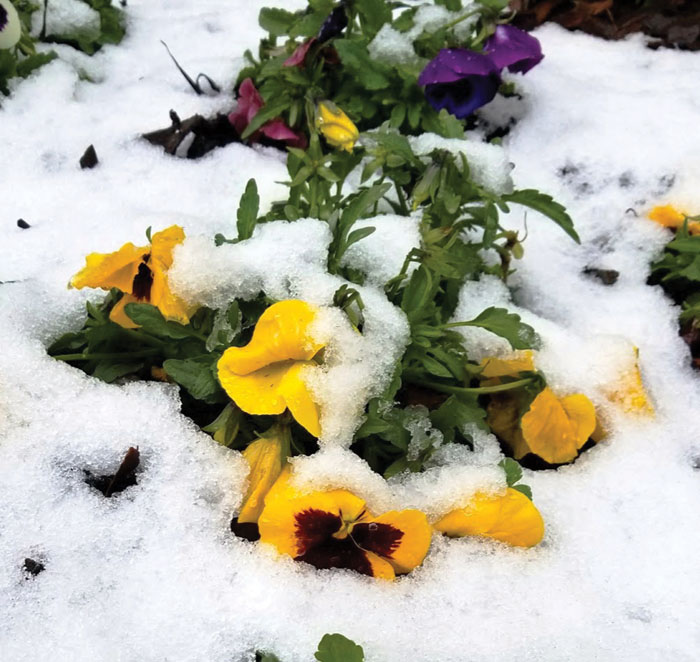Spring is near, and so are lawn questions
Published 12:00 am Friday, March 16, 2018

- Submitted photo The recent snow shouldn't damage hearty plants like pansies.
We experienced an unexpected setback earlier this week with the cold weather and snow, but as the weather begins to become more spring-like, many people will forge ahead with their outdoor landscaping chores.
Below are a few questions posed over the past two weeks that may be of interest for those working in their lawns and landscapes.
Question: I sprayed the weeds in my lawn last week and they are not dying. Do I need to spray them again?
Answer: Many broadleaf winter annuals in the lawn are difficult to control, especially if they are in bloom. The weeds should look distorted and withered a few days after the initial application. Two applications of broad leafed herbicides 10-14 days apart should give you adequate control.
Question: Is it too late to apply crabgrass pre-emergence herbicides to my fescue lawn?
Answer: No, now is the correct time to apply pre-emergence herbicides, but you need to hurry. As the soil warms with warmer temperatures, crabgrass and goosegrass weeds germinate, making pre-emergence herbicides applications useless.
Question: My wife and I planted a couple of areas in our lawn with tall fescue this past fall. It germinated and is growing very well. However, the turf has spots of light green grass that is different. Could the larger grass be wheat seedlings from the wheat straw we used to mulch the grass? Can we kill the taller grass?
Answer: It’s very possible that it is wheat seedlings that germinated with your fescue, however, its most likely annual ryegrass seedlings. Annual ryegrass often adulterates cool season fescue during commercial seed production. The annual ryegrass seed itself is almost impossible to discern from tall fescue. Both wheat seedlings and annual ryegrass will die out as soon as the weather warms in late May.
Question: Did the snow and cold weather earlier this week hurt our blooming plants?
Answer: Most of the plants blooming at this time of the year can take colder temperatures. The snow actually insulates and protects blooms from cold weather. However, you may have bloom burn on some blooms such as camellias.
Question: What is type of tree is that in the median in front of Catawba College?
Answer: It’s a deciduous magnolia, most likely a star magnolia Magnolia stellata. Hurley Park has a large collection of various deciduous magnolia types which includes the saucer or tulip magnolia Magnolia soulangeana. These are now at various stages of bloom along the walkways.
Question: I have some red maple trees and the limbs hang low, slapping me in the face when I try to mow under them. Can I prune them now?
Answer: Yes, judicious pruning of trees at this point will not damage them. Be sure not to prune too close to the trunk, or leave a stub. Avoid using pruning paint.
Darrell Blackwelder retired as the county Extension director with horticulture responsibilities with the North Carolina Cooperative Extension Service in Rowan County.




